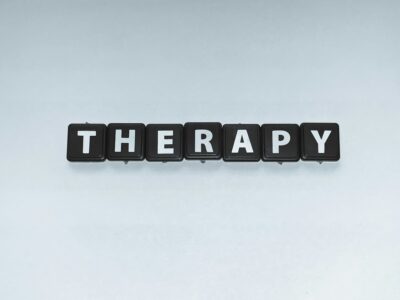Negative thoughts can feel overwhelming and persistent, creating cycles of anxiety, depression, and self-doubt that seem impossible to break. If you find yourself caught in patterns of catastrophic thinking, self-criticism, or rumination, you’re not alone. Millions of people struggle with intrusive negative thoughts that impact their daily lives and overall well-being. Fortunately, there’s a powerful tool that combines the evidence-based principles of Cognitive Behavioral Therapy with the reflective practice of writing: CBT journaling for negative thoughts.
This therapeutic approach offers a structured way to identify, examine, and challenge the distorted thinking patterns that fuel emotional distress. Unlike traditional journaling, which might involve simply writing about your day or emotions, CBT journaling follows specific techniques designed to help you recognize cognitive distortions and develop more balanced, realistic thought patterns. By putting pen to paper—or fingers to keyboard—you create a tangible record of your thoughts and can begin to see patterns that might otherwise remain hidden in the chaos of your mind.
The beauty of CBT journaling lies in its accessibility and effectiveness. You don’t need expensive therapy sessions or complicated tools to get started. With just a notebook and a willingness to explore your thoughts honestly, you can begin transforming your relationship with negative thinking. Research has consistently shown that combining cognitive behavioral techniques with expressive writing can significantly reduce symptoms of anxiety and depression while improving overall psychological resilience.
Understanding the Science Behind CBT Journaling
Cognitive Behavioral Therapy, developed by Dr. Aaron Beck in the 1960s, is based on the fundamental principle that our thoughts, feelings, and behaviors are interconnected. When we experience negative emotions, it’s often because our thoughts are distorted or unhelpful, leading to behaviors that reinforce these negative feelings. CBT journaling for negative thoughts works by interrupting this cycle at the cognitive level, giving you the tools to examine and modify your thinking patterns.
The act of writing itself activates different areas of the brain than simply thinking. When you write down your thoughts, you engage the prefrontal cortex—the part of your brain responsible for executive function and rational thinking. This engagement helps create distance between you and your thoughts, making it easier to observe them objectively rather than being swept away by their emotional intensity. Neuroplasticity research shows that consistent practice of CBT techniques can literally rewire your brain, creating new neural pathways that support healthier thinking patterns.
Studies have demonstrated that expressive writing, particularly when combined with cognitive restructuring techniques, can lead to improvements in both mental and physical health. Participants in CBT journaling studies have shown reduced cortisol levels, improved immune function, and decreased symptoms of anxiety and depression. The key is consistency and structure—random venting without the framework of CBT principles may provide temporary relief but won’t create lasting change.
Core Components of Effective CBT Journaling
Successful CBT journaling for negative thoughts relies on several key components that distinguish it from general diary writing. The first essential element is thought identification—learning to recognize and capture your automatic thoughts as they occur. These spontaneous thoughts often happen so quickly that we don’t consciously notice them, yet they powerfully influence our emotions and behaviors. Through journaling, you develop the skill of thought awareness, catching these automatic responses before they spiral into overwhelming emotional states.
The second crucial component is cognitive analysis, where you examine your recorded thoughts for accuracy and helpfulness. This involves identifying cognitive distortions—systematic errors in thinking such as all-or-nothing thinking, catastrophizing, mind reading, or fortune telling. Common distortions include assuming the worst possible outcome, believing you can read others’ minds, or viewing situations in absolute terms without recognizing middle ground. By learning to spot these patterns in your writing, you develop the ability to question their validity in real-time.
Evidence evaluation forms the third pillar of effective CBT journaling. Once you’ve identified a negative thought and recognized any distortions it contains, you systematically examine the evidence for and against that thought. This process involves asking yourself questions like “What proof do I have that this thought is true?” and “What evidence contradicts this belief?” This balanced approach helps you develop more realistic, nuanced perspectives on challenging situations.
Core CBT Journaling Techniques for Transforming Negative Thoughts
CBT journaling for negative thoughts involves several structured approaches that help you identify, examine, and reframe unhelpful thinking patterns. The foundation of this practice lies in developing awareness of your thought processes and learning to challenge them systematically.
The Thought Record Method
One of the most effective CBT journaling techniques begins with creating a thought record. When you notice a negative thought arising, write down the specific situation that triggered it, the emotion you’re experiencing, and the intensity of that emotion on a scale of 1-10. For example, if you receive constructive feedback at work and think “I’m terrible at my job,” record this thought along with the feelings of shame or anxiety it produces.
Next, examine the evidence supporting and contradicting this thought. Ask yourself: “What facts support this belief? What evidence contradicts it?” In our example, you might list recent accomplishments, positive feedback from colleagues, or successful projects as evidence against the negative thought. This process helps you develop a more balanced perspective.
Identifying Cognitive Distortions
CBT journaling for negative thoughts becomes more powerful when you learn to recognize common thinking errors. All-or-nothing thinking, catastrophizing, and mind reading are frequent culprits behind persistent negativity. When journaling, label these distortions as you encounter them. If you catch yourself thinking “Everyone thinks I’m incompetent” after making a minor mistake, recognize this as mind reading and overgeneralization.
Create a personal reference list of cognitive distortions you frequently experience. This awareness alone often reduces their impact on your emotional well-being. Many people find that simply naming these patterns diminishes their power significantly.
Developing Alternative Perspectives
After identifying and challenging negative thoughts, the next step involves generating more balanced alternatives. Instead of “I always mess things up,” you might write “I made a mistake, but I’ve successfully handled similar situations before and can learn from this experience.” These alternative thoughts should be realistic rather than overly positive, as authenticity enhances their effectiveness.
Practice writing three different alternative perspectives for each negative thought you record. This exercise strengthens your ability to consider multiple viewpoints and reduces the tendency to accept the first negative interpretation that comes to mind.
Practical Implementation Strategies
Consistency is crucial for successful CBT journaling for negative thoughts. Set aside 10-15 minutes daily for this practice, preferably at the same time each day. Some people prefer morning journaling to set a positive tone for the day, while others find evening reflection more beneficial for processing daily experiences.
Consider using digital tools to enhance your practice. For those interested in combining traditional CBT techniques with modern technology, Try Aitherapy now to explore AI-assisted therapeutic approaches that can complement your journaling practice with personalized insights and support.
Remember that progress in CBT journaling occurs gradually. Initially, you may only notice negative thoughts after they’ve already impacted your mood. With consistent practice, you’ll develop the ability to catch these thoughts earlier and respond more effectively. Track your emotional intensity ratings over time to observe patterns and celebrate improvements in your mental well-being.
Building Long-Term Success with CBT Journaling
The journey of transforming negative thoughts through CBT journaling requires patience and commitment, but the results can be life-changing. As you continue practicing these techniques, you’ll notice subtle shifts in your thinking patterns that gradually compound into significant improvements in your overall mental health and emotional resilience.
Tracking Your Progress
Maintaining a weekly review of your CBT journaling for negative thoughts helps solidify your progress and identify areas for continued growth. Look back at your entries to notice patterns in your triggers, emotional responses, and the effectiveness of different coping strategies. Many practitioners find that their initial negative thoughts seem less credible when viewed from this broader perspective.
Create a simple rating system to track how quickly you can identify and reframe negative thoughts. This objective measure helps maintain motivation during challenging periods when progress feels slow. Document breakthrough moments when you successfully catch and redirect negative thinking in real-time.
Integrating Techniques into Daily Life
As your skills develop, CBT journaling for negative thoughts becomes more intuitive and requires less formal structure. You might find yourself naturally questioning negative assumptions or generating alternative perspectives without writing them down. This mental flexibility represents the ultimate goal of consistent practice.
Consider sharing your journey with trusted friends or family members who can provide support and accountability. Some people benefit from joining online communities or support groups where they can discuss their experiences with CBT techniques and learn from others facing similar challenges.
Conclusion
CBT journaling for negative thoughts offers a scientifically-backed pathway to breaking free from destructive thinking patterns and developing greater emotional well-being. Through consistent practice of thought records, cognitive distortion identification, and alternative perspective development, you can transform your relationship with negative thoughts from one of helplessness to one of empowerment.
Remember that this process requires time and patience. Each entry in your journal represents a step toward greater self-awareness and emotional resilience. The techniques outlined in this guide provide a solid foundation, but your personal journey will be unique to your circumstances and challenges.
For those seeking additional support in their mental health journey, modern tools can complement traditional CBT techniques. Try Aitherapy now to explore how AI-assisted therapeutic approaches can provide personalized insights alongside your journaling practice.
Start your CBT journaling practice today, even if it’s just for five minutes. Your future self will thank you for taking this important step toward mental wellness and emotional freedom.
References
Beck, J. S. (2011). Cognitive behavior therapy: Basics and beyond (2nd ed.). Guilford Press.
Burns, D. D. (1999). Feeling good: The new mood therapy. Harper.
Greenberger, D., & Padesky, C. A. (2015). Mind over mood: Change how you feel by changing the way you think (2nd ed.). Guilford Press.
Hofmann, S. G., Asnaani, A., Vonk, I. J., Sawyer, A. T., & Fang, A. (2012). The efficacy of cognitive behavioral therapy: A review of meta-analyses. Cognitive Therapy and Research, 36(5), 427-440.
![$input.first().json.photos[2].photographer_url](https://images.unsplash.com/photo-1625229086762-f06307638717?crop=entropy&cs=tinysrgb&fit=max&fm=jpg&ixid=M3w4MDk5MjJ8MHwxfHNlYXJjaHwzfHx3cml0aW5nJTIwam91cm5hbCUyQyUyMHJlZmxlY3Rpb24lMkMlMjBtZW50YWwlMjBoZWFsdGh8ZW58MHx8fHwxNzYwMjYzMjU1fDA&ixlib=rb-4.1.0&q=80&w=1080)


